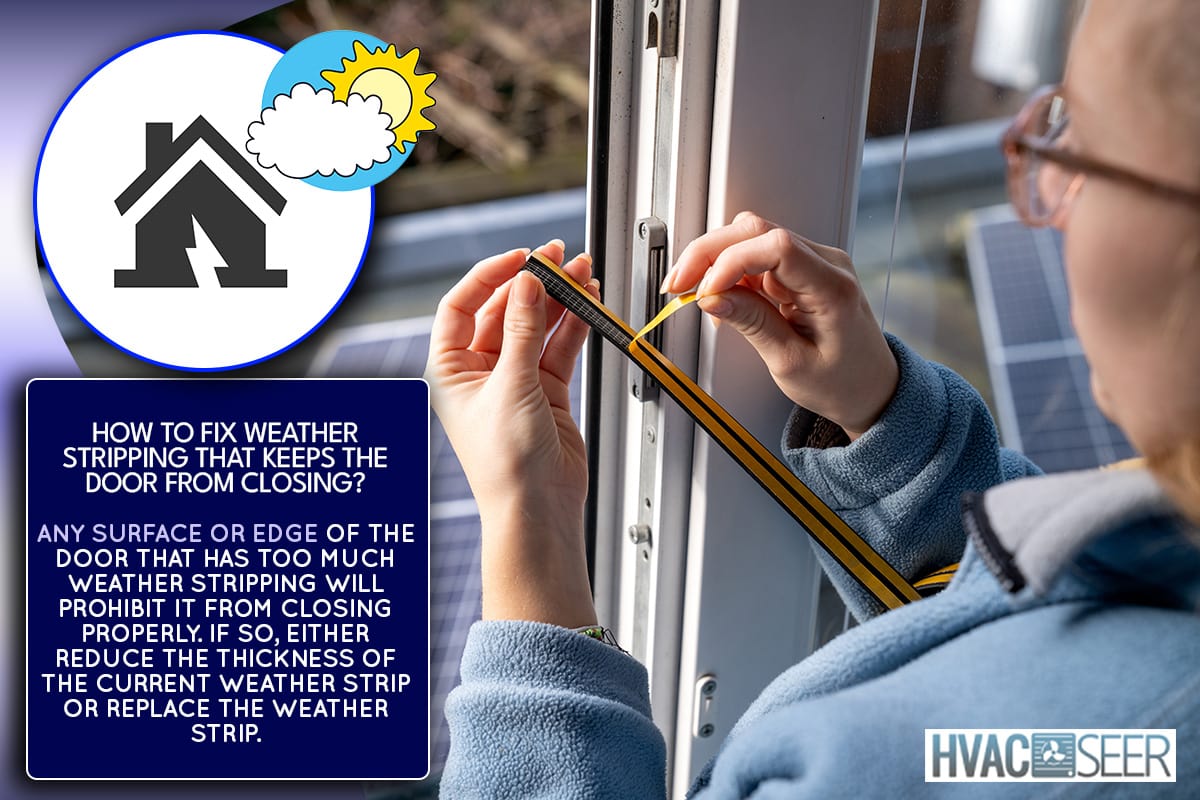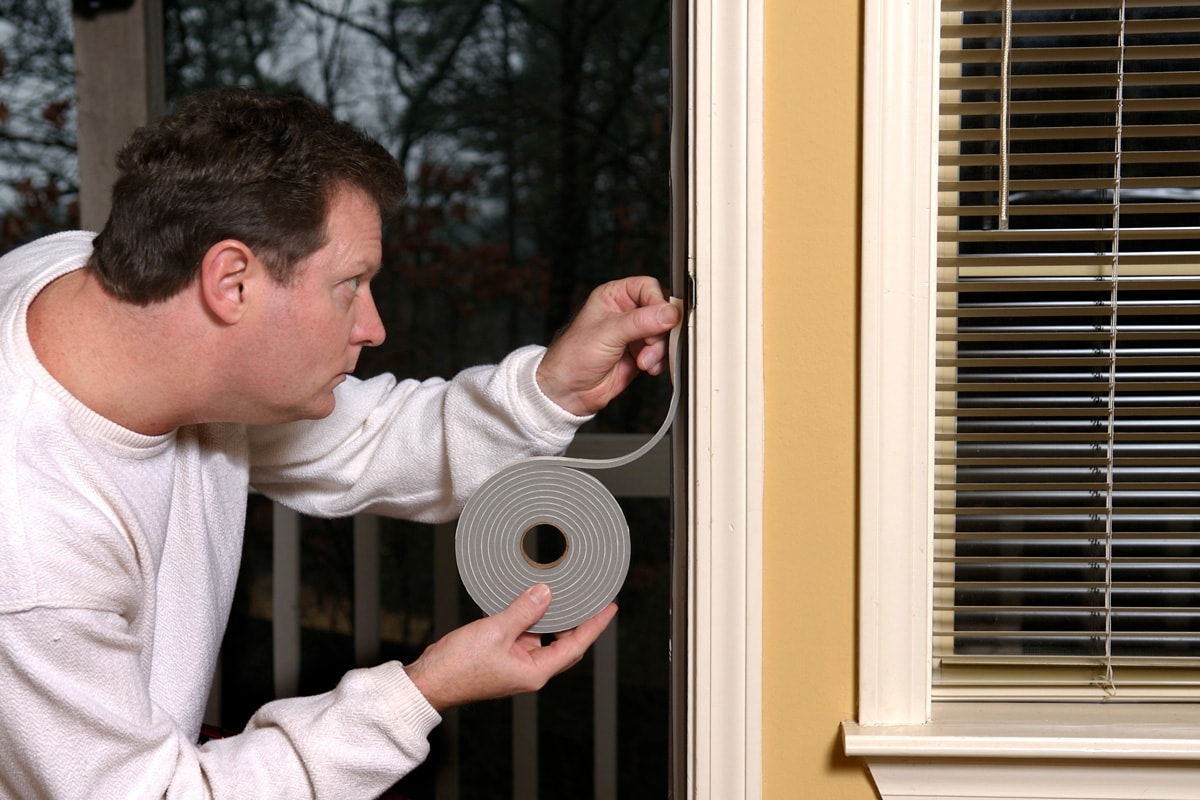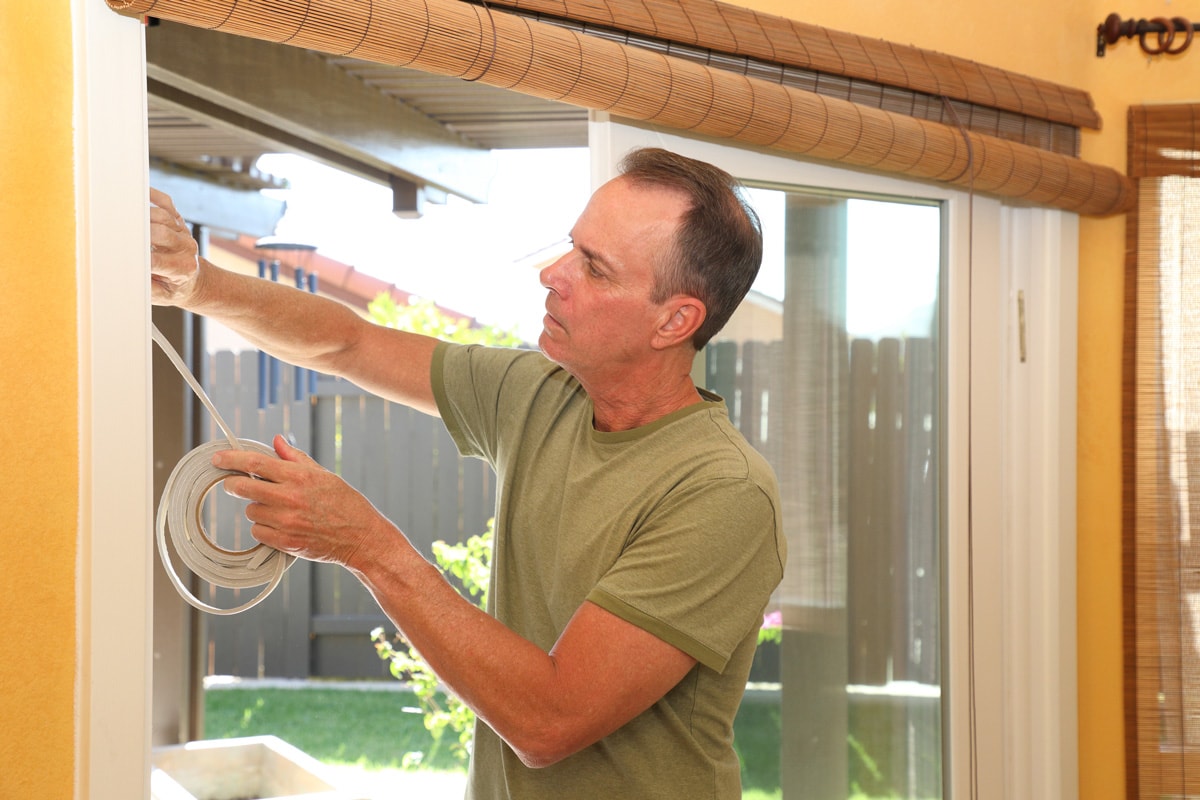There are several reasons one may need to repair a door such as inadequate weatherstripping. Want to know how to fix this weatherstripping especially when it keeps the door from closing? Well, we’ve researched this topic and put together the following information to aid you.
Any surface or edge of the door that has too much weather stripping will prohibit it from closing properly. If so, either reduce the thickness of the current weather strip or replace the weather strip.
We'll have an interesting discussion on weatherstripping in this article. We'll explain the comprehensive solutions for your door's weatherstripping issue to you. Additionally, we'll discuss several kinds of weather strips with you so you may get ideas when making a purchase. There is more information to come, so keep reading.

How To Fix Weather Stripping That Keeps The Door From Closing?

A badly fitted door can be made to work and operate at its best with some simple tools and attention. A building's entrance door is a crucial part since it protects the interior from outside elements, adds security to the property, and improves the building's overall energy efficiency.
All of these factors are justifications for fixing an entry door to make sure it closes securely. Here are the two ways to get the door working correctly again if your door keeps from closing because of the weather stripping:
Reduce The Thickness Of The Current Weather Strip
Your door may not shut completely because the weather stripping is oversized, irregular, or too thick. To resolve the case, reduce the thickness.
Make sure the door hinges are tight before beginning to cut the weather strip. Lift the door by using the doorknob. Tighten the screws on the top hinge if there is any play and the door rises. Afterward, confirm that the screws on the bottom hinge are tight.
Start cutting the excess thickness of the weather strip using an electric knife which works very well on any foam kind of weather strip.
Click here to see this electric knife on Amazon.
You may also use an x-acto knife for cutting, it's a utility knife that is used to cut a wide range of materials, including wood, plastic, and more.
Click here to see this x-acto knife on Amazon.
Replace The Weather Strip

When cutting the excess did not work out, the last thing you can do is to replace the weather strip, below are the simple steps to follow:
- To give the new material a smooth, clean surface on which it can successfully cling, remove the old weather strip first.
- You might also need to remove your current threshold or plane the bottom of the door, depending on the type of weather strip you select.
- Determine the length of the threshold and the door.
- For the screws, mark, and drill pilot holes.
- Tighten the screws holding the weather strip to the bottom of the door.
- Using the provided screws, secure the threshold.
- Make that the door opens and closes smoothly, and make any necessary adjustments.
For a better visual understanding of how to remove and install a new weatherstrip on your door, a video tutorial is shown on YouTube below.
Is Weather Stripping Necessary?
Your home's energy efficiency depends heavily on the tiny bits of weather stripping between your doors and frames.

When it comes to preserving your home's maximum energy efficiency, many homeowners undervalue the enormous importance of properly maintained weather stripping materials. The weather stripping is often attached to the doorframe so that when the door is closed, light and air cannot leak through the opening.
The components are carefully sized and fitted to seal any gaps that would otherwise exist when your door is closed. During both extremely hot and extremely cold months, weather stripping is useful in lowering energy expenditures.
If your property doesn't have the right weather stripping, you're simply letting money escape through your windows and doors. Without sufficient weather stripping, air leaks can account for up to 40% of a home's heating and cooling losses.
Also, more harm than just higher monthly energy expenses can result from air leaks. In the winter, warm air escapes from your house, and in the summer, it seeps in, carrying moisture in the form of water vapor.
This moisture has the ability to seep into your insulation and walls, causing significant harm and perhaps spawning mold and/or mildew. In other words, adding weather stripping to your doors can work wonders.
What Are The Different Types Of Weather Stripping?
Consider a few weather stripping types while deciding to replace your old one. There are many different types of weather strips available, each having unique purposes, pros, and cons. Let's examine these easily accessible varieties.
Door Sweep
A door sweep is a wooden or metal strip attached to the exterior of the door and equipped with a nylon blade.
- Ideal for: Bottoms of interior and exterior doors
- Pros: Installation is easy, reduces carpet drag, and adjustable
- Cons: Expensive
Click here to see this door sweep on Amazon.
Felt
It is a conventional substance that comes plain or strengthened with a flexible metal strip.
- Ideal for: Door jambs
- Pros: Less expensive and installation is easy
- Cons: Ineffective, prone to moisture, and highly noticeable
Click here to see this felt weather strip on Amazon.
Fin Seal
Fin seal weather strips are carpet-like stacks of several strands of material. In the middle of the pile is a fine that aids in strengthening and reinforcing the material.
- Ideal for: Sliding doors
- Pros: Durable
- Cons: Installation is difficult
Click here to see this fin seal weather strip on Amazon.
Magnetic
It is an efficient perimeter seal for a steel-facing door. Ultraviolet stabilized thermoplastic elastomer (UV-stable TPE) cover surrounds the magnetic strip.
- Ideal for: Top and sides of doors
- Pros: Effective air sealer
- Cons: Expensive
Click here to see this magnetic weather strip on Amazon.
Reinforced Foam
It is constructed from foam, either open- or closed-cell or rubber with an adhesive back called ethylene propylene diene monomer (EPDM). It's perfect for cracks with unusual shapes because it comes in a variety of widths and thicknesses.
- Ideal for: Door stops and bottoms
- Pros: Good sealant and rigid
- Cons: Installation is difficult and emits greenhouse gases.
Click here to see this reinforced foam weather strip on Amazon.
Rolled-Vinyl Gasket
It is specially made for sealing various gaps and includes a flexible bulb that closes around doors. It is simple to install and can be fastened with staples or nails.
- Ideal for: Door stops and bottoms
- Pros: Installation is easy, low costs, and self-adhesive
- Cons: More noticeable
Click here to see this rolled-vinyl gasket weather strip on Amazon.
Tapes
It works well to close gaps of unusual shapes. With a utility knife or scissors, you can trim the tape to the proper length. Self-adhesive tapes are also common, which facilitates easy and efficient application. You can use it only on clean surfaces.
- Ideal for: Door jambs and bottoms
- Pros: Effective air sealer
- Cons: Noticeable, low durability, and emits greenhouse gases
Click here to see this tape weather strip on Amazon.
Tension Seal
It is made of stainless steel, aluminum, or vinyl. When the material is compressed to form a tight seal, the V-shaped folds create stress similar to that of a spring. That is why it is also known as V-strip.
- Ideal for: Door sides and top
- Pros: Not noticeable, efficient, and durable
- Cons: Installation is difficult
Click here to see this tension seal weather strip on Amazon.
How To Choose Weather Stripping?
If you hire a professional to install your weather stripping, they'll probably provide suggestions or decide on the ideal material for you. Otherwise, you can choose from a large range of weather stripping products, each of which is designed to meet a specific purpose around the house.
Start by examining the doors you wish to seal to focus your search. Separate those that swing from those that slide, and take note of the kinds of openings each has.
The weather stripping material for sliding doors must allow for movement. For bigger gaps, you'll also require larger pieces of material.
When installing weather stripping yourself, use tools and supplies that you feel confident using. While some weather strips are made to adhere to them, others can need additional materials and tools.
How Often Should You Replace Weather Stripping?

The general rule of replacing weather stripping is generally every several years. Therefore, if it has been two or three years since you last changed or replaced the weatherstripping on your doors, it is a clue that they need to be replaced.
You might need to replace weatherstrips considerably more frequently, though, depending on how frequently and how much the door is used.
The weather stripping on frequently used doors, such as your front door, will inevitably deteriorate more quickly and become less effective at keeping heat inside your home, necessitating replacement once or twice a year.
Even while certain seasons may not see much use of specific doors, you should nevertheless inspect the weather stripping on each before winter and again before spring. It's not difficult to inspect the weather stripping, and if you know what to look for, you can quickly check all the doors in your house.
Final Thoughts
Always inspect all of your home's doors before making any repairs, not just the one you think needs it most. From garage door openings up to attic door openings, you should seal and insulate them. When harsh temperatures arrive, you'll be glad you did!
Before leaving, check out some of our posts below.










